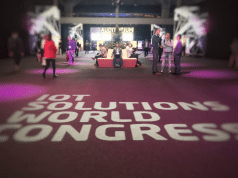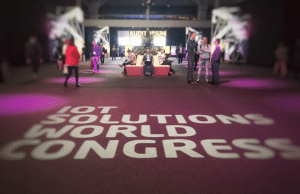incentive travel is still holding strong
The 2017 SITE Index, the authoritative analysis and forecast for the global incentive market released this week by the Society for Incentive Travel Excellence (SITE) Foundation, highlights the fluid, complex world of incentive travel impacted by factors such as the world economy, the potential for terrorist actions, and the political climate.
Other factors such as the proliferation of disintermediation and the growing role of event technology are also influencing the industry.
This year’s study, conducted by J.D. Power, includes responses from 599 buyers and sellers of incentive travel, as well as other industry professionals from 62 countries – 61% from outside the United States. For the first time the survey was offered in three languages (English, Spanish and Mandarin) to provide a more inclusive and global perspective of the incentive travel industry.

Tina Weede, CRP, SITE Foundation vice-president research & education and president, USMotivation, presented the results at a Smart Monday session during IMEX America week in Las Vegas. “The travel industry has always been one easily affected by world events. From uncertain economies to natural calamities, from acts of terrorism to Zika concerns – a lot has happened over the past year that has impacted travel. Despite the ever-changing global landscape, the incentive travel industry is still holding strong.”
Incentive Travel Works
Sixty percent (60%) of buyers report they plan to increase the number of people eligible for incentive travel awards in the next year and nearly half of all buyers say that budgets have increased. An overwhelming majority of respondents (99%) believe that incentive travel programs are somewhat or very effective in achieving important business objectives, with approximately eight in 10 buyers and sellers reporting that they are a strong motivator of performance.
World Economy
While increased airline costs have the greatest negative impact, concerns over the economy are growing, especially amongst sellers. Sixty-seven percent (67%) of sellers and 56% of buyers say that the state of the world economy has the potential to negatively impact their travel programs. This means creating value becomes paramount amidst economic concerns, and 76% of sellers report working on greater creativity/innovative event design in order to increase value for their customers.
Terrorism/Border Security
Tightening of border security and safety concerns has had a significantly increased impact on incentive travel decisions. Almost eight out of ten buyers see a negative impact of terrorism on their ability to plan and implement incentive travel programs. European buyers are the most concerned (85%), followed by Asian buyers (83%) and North American buyers (78%). Similarly a growing number of buyers, one out of four, believe the tightening of border security will have a negative impact with Asian (58%) and European (53%) buyers the most concerned about these matters.
ROI Tracking
Measuring the effectiveness of incentive travel programs in terms of sales and profits is not new, but the practice is still surprisingly limited with only 23% of corporate buyers and 24% of third party suppliers “always” or “almost always” tracking return on investment (ROI). The primary reason given for not tracking ROI is a lack of requirement from management. Like any sound business investment the use of incentive programs to achieve critical business objectives must have proven value to the organization; buyers and suppliers appear to be missing an opportunity to prove the efficacy of their programs.
Disintermediation
The majority of buyers (57%) think disintermediation in the travel industry has negatively impacted their company. Third party suppliers, 70% of whom believe the increase of corporate buyers going direct to suppliers has negatively impacted their company compared to only 19% of corporate users, primarily drive this view. This trend may be explained by the growing role of event technology in the purchasing process, with 54% of buyers reporting their use of event technology will increase in the next three years.
Popular Destinations
Despite general concerns of health and safety, buyers report the highest incidences of increased use of incentive travel to North America, the Caribbean and Western Europe destinations. Yet, preferences appear to differ based upon the home region of the buyer. North American and European buyers are most inclined to utilize domestic travel while Asian buyers are most inclined to utilize international travel destinations. South American buyers are trending towards decreased domestic travel.
Today’s world is complicated for buyers and sellers of incentive travel and the landscape is in constant motion. This is why it is vitally important that incentive travel professionals stay on top of prevailing trends to prepare for the future and ensure that their businesses and the global incentive industry stay strong for years to come.














